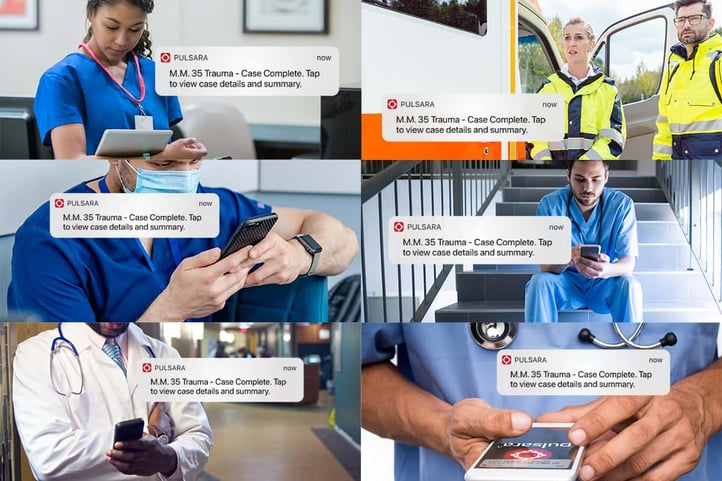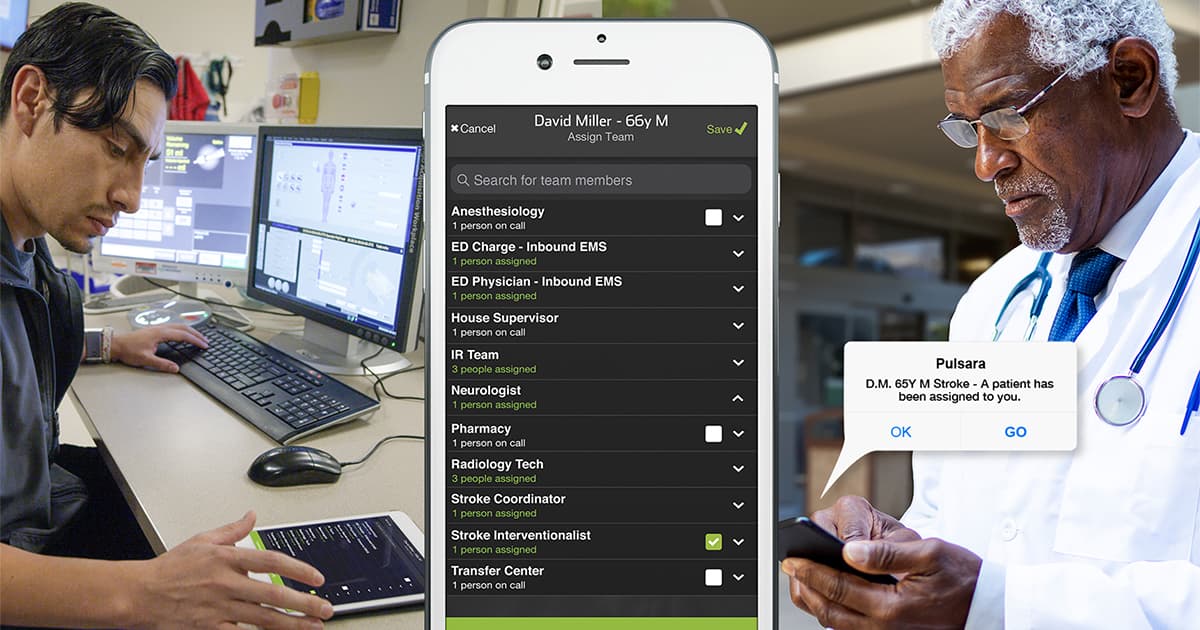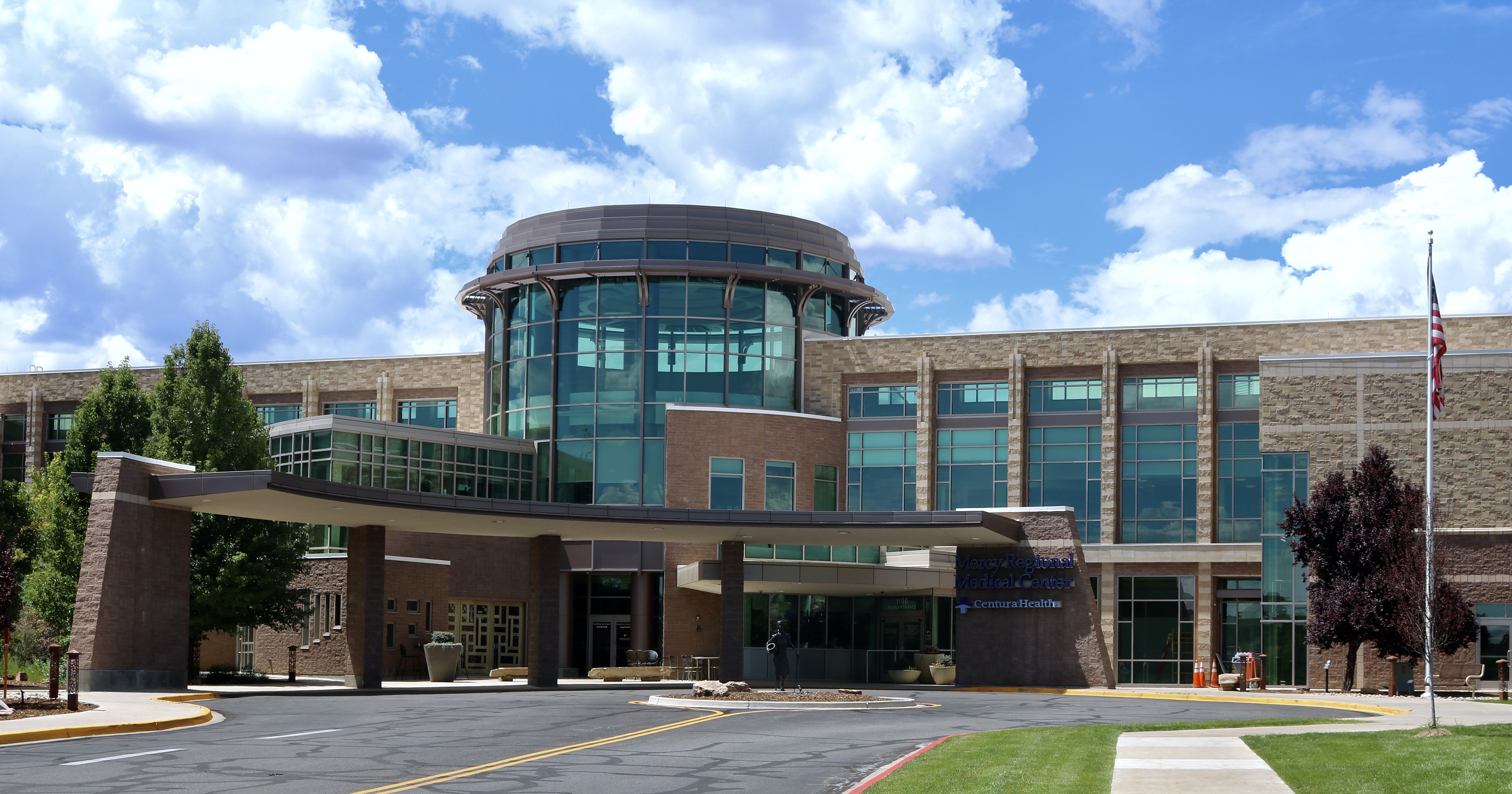Editor's Note: This article was originally posted on Becker's Hospital Review under the title "From communication silos to unified communication: 4 takeaways on a new system for improving the patient journey."
The traditional patient journey is plagued by communication silos. Multiple healthcare providers are involved in a patient's care from start to finish, but many times they don't have the tools needed to communicate effectively with each other. Pulsara enables unified communication that dismantles these silos, providing a single source of truth between disparate care teams that improves emergency care coordination.
In a November webinar hosted by Becker's Hospital Review, Joey Branton, Pulsara's Senior Vice President for Strategic Initiatives, discussed the silos in healthcare communication and described how Pulsara's solution provides improved networked communication with a system of care that scales.
Here are four key takeaways from the presentation:
1. Today's patient journey involves numerous one-to-one communication channels, which are inefficient and create opportunities for errors.
There are many players involved in caring for each patient: first responders, ambulances, hospitals, transfer centers, and more. At every step of each patient’s journey there might be a variety of communication channels used — including pagers, radios, phone calls, faxes, and various handoffs. "Every time communications open and close, they present the opportunity for miscommunication, communication errors, and loss of efficient communication," Mr. Branton said.

2. Pulsara changes the patient journey from one-to-one communication to many-to-many communication.
Pulsara enables real-time team communication across healthcare through three steps. First, create a dedicated channel for a patient, based on a discrete event. Second, build the team dynamically for that patient event. This can include team members from different entities with disparate data systems, including emergency medical services, team members at hospitals, etc. Finally, communicate and track the patient's care throughout the continuum of care, using group messaging, phone and video calls, audio clips, imaging, and integration with data, such as an ECG. "Ultimately, we bring everybody onto one communication channel about a single patient that is shared and where everyone can communicate everything that's going on with the patient," Mr. Branton said.
Importantly, cases can be started for any patient, at any time, from anywhere, including for a patient coming in via EMS, for a patient who walks into the emergency room, or for an inpatient. All of a patient's data and information about an event are recorded and are accessible, on both mobile and desktop devices.

3. The airline industry has lessons for healthcare.
How does the airline industry get the right person to the right place at the right time? Through a standardized communication platform that is immune to airline affiliation, origination, or destination location. Like the air traffic control system, healthcare response needs a standard communications platform and needs to be immune to EMS, public health, hospital domains, and origination or destination location.
4. Pulsara's scalable communication system has great value in emergencies.
The ability to activate teams, connect multiple providers, and communicate continuously using multiple methods is extremely important during an emergency — locally, regionally, and statewide. Pulsara is also being used to assist with load balancing in urgent situations such as COVID-19 patient surges.

Pulsara is helping with COVID-19 management by helping mitigate patient surge, streamlining patient transfers, minimizing exposure, and more. Learn more about COVID-19 + Pulsara here.
 Team Pulsara
Team Pulsara



![[PRESS RELEASE] Published Research Finds Up to 31% Faster STEMI Treatment Times in Rural Hospital Setting with Pulsara](https://www.pulsara.com/hubfs/_1_website-page-blog-assets/pulsara-hosp-teams-assign-cardio-stemi-rn-1200x701.jpg)

